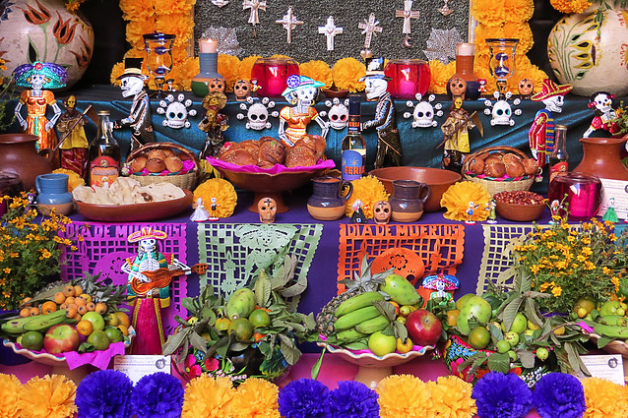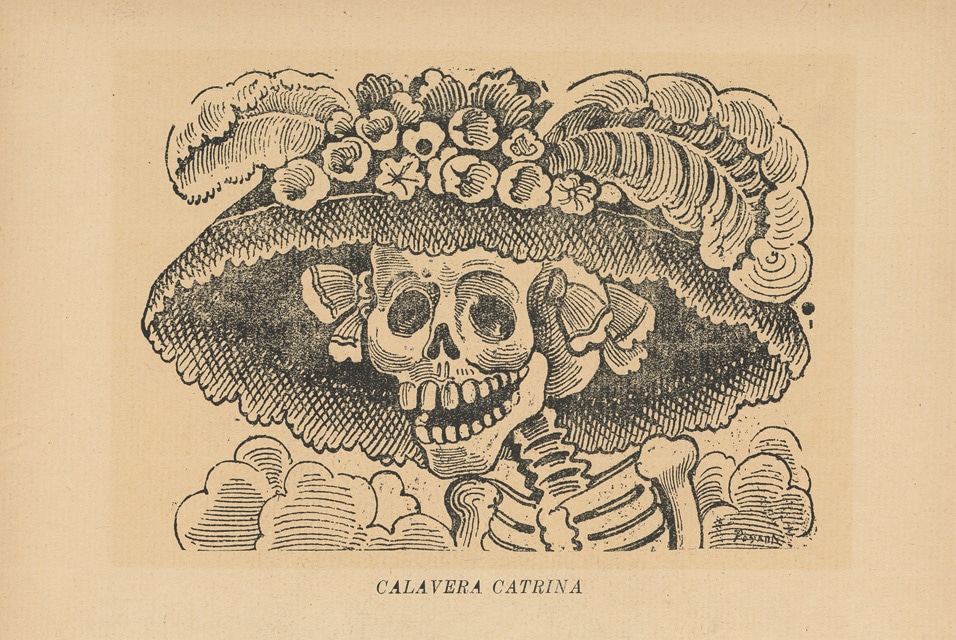The Day of the Dead: November 2nd
Maybe you have seen the colorfully painted skulls popping up around town lately. There is also a skeleton lady with a fancy dress elegantly draping her bony frame, red roses adorning her long black hair, and colorful makeup accentuating her eye sockets and stitched up smile. Sometimes she even wears a lovely feathered hat proving that even the dead have style and grace.
The skulls are called Calaveras and the ladies are known as las Catrinas. They are actually not related to Halloween at all. Or, at least not traditionally. However, over the past several years they have become more and more popular, and have been popping up as one of the favorite disguises for Halloween costumes.
Have you seen the movie, Coco? (If you haven’t seen it, you should. It’s a great movie for the whole family this time of year.) Well, if you have seen Coco, you know that these Calaveras and catrinas are actually part of the Mexican celebration of the Day of the Dead, which happens every year on November 2nd.
So, what is the Day of the Dead and how did these Calaveras and catrinas become symbols of this celebration?
Well, despite occurring at the same time, they are actually not the same thing. The Day of the Dead is not the Mexican version of Halloween. In fact, you probably won’t find any houses decorated with ghosts, bats, and pumpkins in Mexico like you do here in the USA. Although, close proximity and marketing of pop culture have made some things popular, like dressing up in costumes and eating candy. But, this is more likely to happen in schools for fun rather than knocking on doors and trick or treating in the neighborhood like we do here.
If you are curious about American Halloween traditions and origins, you can find them on last year’s blog post here.

Dia de Los Muertos
For now, we will continue with the beautiful Mexican catrina’s, Dia de Los Muertos.
Dia de Los Muertos, or Day of the Dead in English, is celebrated to honor past ancestors and loved ones who have died.
Some regions of Mexico like Oaxaca and Morelia are famous for going to the cemetery and decorating the gravesites in much the same way as the altars, and then they pass the night waiting for the return of their loved ones. However, this is not a common tradition. It is more likely to find a home with an altar (or ofrenda) than to meet someone who goes to visit the cemetery every year. Although, this tradition of putting an altar has lessened over the years, especially in the bigger cities.
These ofrendas are filled with the departed’s favorite things so that when the dead come back to visit, which is believed to happen during the days between November 1st and November 2nd, they can enjoy the pleasures they once had while alive. For example, an altar may have a photograph of someone’s grandfather with a bottle of tequila or a tamale. There may be a picture of a young child with a favorite toy or a cookie.
While the photographs and personal items will differ from house to house, all altars have similar symbolic items. First, there are the bright orange petals of the Cempazuchitl flowers (marigolds in English) and talcum powder which create a pathway to help guide the dead to the altar. On the altar, you will find more of these pungent Cempazuchitl (pronounced sim-pa-su-cheel) flowers in vases along with candles to adorn the altar.
Another common decoration for the altar is papel picado which is made from dozens of layers of tissue paper with carefully pierced designs. This paper isn’t exclusive for Dia de Los Muertos, but it plays an important role in this holiday representing the wind and fragility of life. Calaveras, or brightly painted sugar skulls, are a gift demonstrating the vitality of spirit and individual personality. To keep away the bad spirits, copal incense is burned.
Of course, no Mexican ofrenda is complete without food. The dead have had a long journey to come visit the living, so they need water and sweet bread. This sweet bread is called pan dulce, or pan de muerto. It is flavored with anise seed and is decorated with bones and skulls. Tamales are usually a part of the altar and any other favorites of the loved ones who are visiting.
This is a time to celebrate the life of a loved one who is passed, not grieve for the loss. It is a tradition that was started over 3,000 years ago with the ancient Aztecs who believed that one should not mourn for the absence of life but memorialize the life that once was.

La Calavera de Catrina
What about La Catrina? What part does she play in Dia de Los Muertos?
As we know her today can be traced back to a print “La Calavera de Catrina” by a Mexican satirical artist, José Guadalupe Posada. Although he used this image to mock the ladies of his time who were trying to be more European and scorning their Mexican heritage, he got the idea from Mictecacihuatl, who was the Aztec goddess of death. Basically he was mocking them by expressing the idea that no matter who we are or who we think we are, we all go to the same place in the end. Diego Rivera, a famous Mexican artist later used a very similar image in one of his famous murals, “Dream of a Sunday Afternoon in Alameda Park”. La Catrina has since become a symbol for the joy of life despite its inevitable end.
As you can see, Dia de los Muertos is not a spooky fright fest of ghosts, witches and pumpkins like Halloween. Rather, this is a celebration of life, a reminder of its finitude, and a call to reflection.














